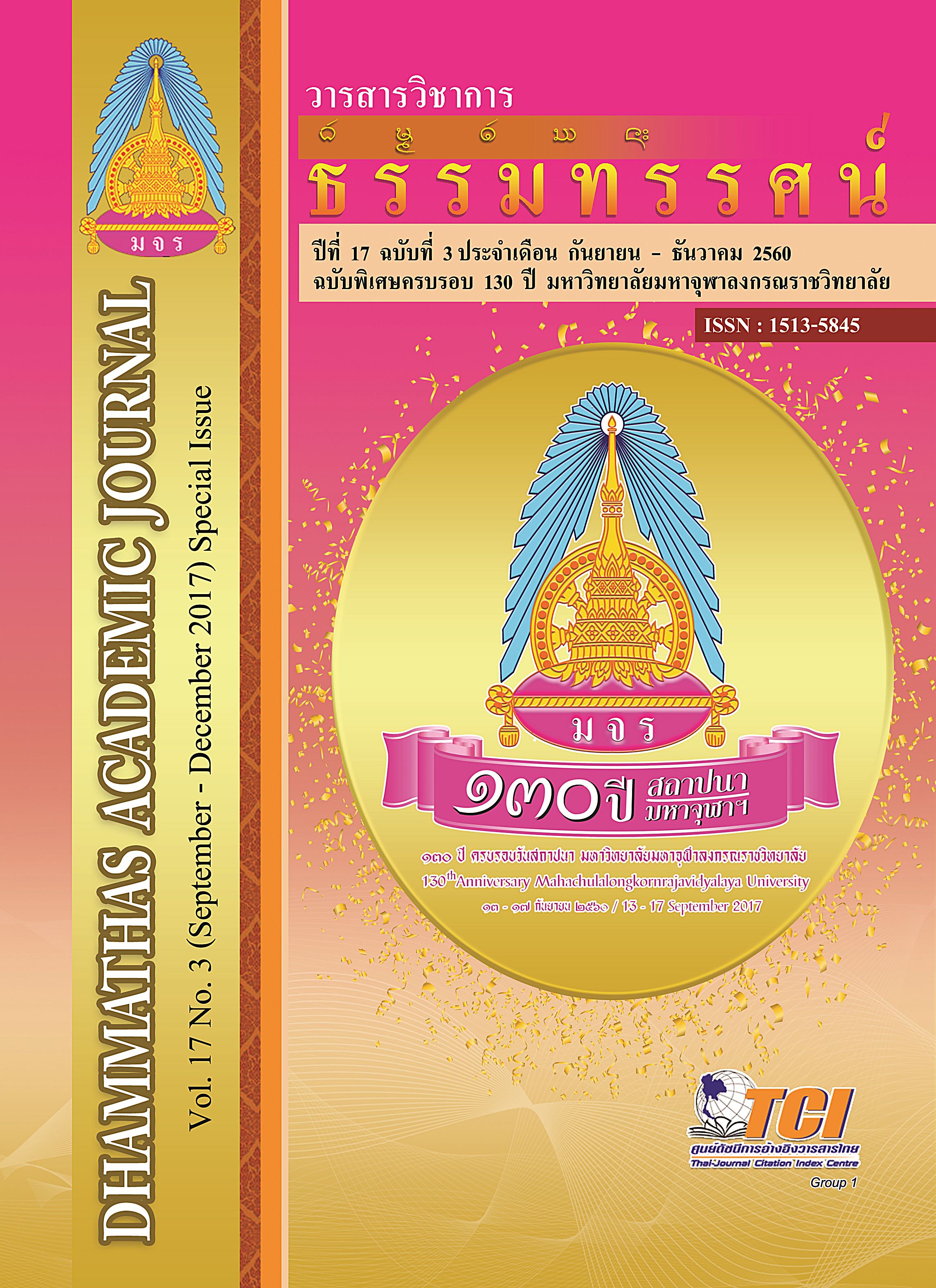A Causal Relationship Model of Factors Influencing Effectiveness Performance of Personnel Area Revenue Office in Regional Revenue Office 10
Main Article Content
Abstract
Theo objectives of this research were to determine factors that influence Theo objectives of this research were to determine factors that influence effectiveness performance of personnel area revenue office in regional revenue Office 10, to a hypothesis of a causal relationship between factors that influence an effectiveness performance of personnel area revenue office, and to confirmatory factors between hypothetical model with quantitative data and find power to predict an effectiveness performance of personnel in area revenue office in regional revenue Office 10. The sample were personnel on performance in area revenue office of 900. The research instrument used in this research was a questionnaire that discrimination was 0.352to 0.670and 0.967 of reliability. Data were analyzed by frequency, percentage, mean, standard deviation, the skewness, kurtosis, connoisseurship and test validity of model by path analysis using Amos program. The research results indicated that: 1. From interview and review documents related research a causal relationship of factors that influence effectiveness performance of personnel area revenue office in regional revenue Office 10 were variables that influence causes by direct only on as transformational leadership, organizational culture, and organizational commitment, variables that influence in a direct and indirect cause of an effectiveness performance of personnel area revenue office as transformational leadership. 2. The model was valid and fitted to empirical data (CMIN/df equals 1.289, a p-value = 0.056 GFI = 0.989 AGFI = 0.974, RMR = 0.012, RMSEA = 0.018, NFI = 0.990, TLI = 0.995, CFI =0.998). Total effect of variables that affect a effectiveness performance of personnel area revenue office were the most organizational culture and transformational leadership, respectively. The predicted accounted for 68.30% of variance in the effectiveness. 3. Expert group agree that a model was consistent (Mdn = 5.00, IRQ (Q3-Q1)= 5.00-5.00) and appropriate at high level (97.60%).

